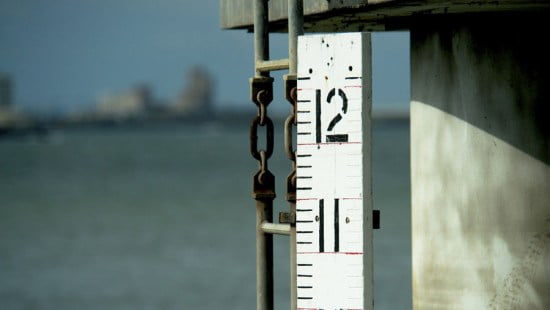A new analysis of global sea-level rise rates concludes the rising trend was 1.56 mm/yr−¹ from 1900-2018.
This is the same rate as for 1958-2014 (1.5 mm/yr−¹), indicating there has not been a long-term distinctive change in sea-level rise rates in the last 120 years. In 2018, Frederikse et al. assessed the contributing factors to long-term sea-level rise from 1958 to 2014.
They determined ice melt and thermal expansion combined to add 1.3 mm/yr−¹ to sea levels during this period, and the overall rate of sea-level rise was 1.5 mm/yr−¹.
Then, in a study published last August, Frederikse et al. (2020) assessed global sea-level rise rates and its sum of contributors since 1900.
Interestingly, they found the rates of sea-level rise were effectively the same for the entire 1900 to 2018 period (1.56 mm/yr−¹) as they were from 1958-2014 (1.5 mm/yr−¹).
The overall long-term trend in sea-level rise has undergone an oscillation: high rates in the 1930s and 1940s, a slowdown during the 1960s and 1970s, and then a return to high rates in recent decades.
It’s interesting to note that the ice-melt contribution to sea-level rise – including the ice-melt contribution from the Greenland ice sheet – was higher in the 1930s and 1940s than it has been during the last few decades.
In fact, the contribution from total ice-mass loss from glaciers was higher for the entire 1900-2018 period (0.70 mm/yr−¹) than it has been since 1957 (0.52 mm/yr−¹), suggesting a relative slowdown.
Neither of these trends – the multi-decadal oscillation in rates or higher ice-mass contribution prior to 1950 – would appear to correlate well with the linearly accelerated rise in CO2 emissions since the 1940s.
Read more at No Tricks Zone



